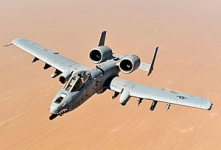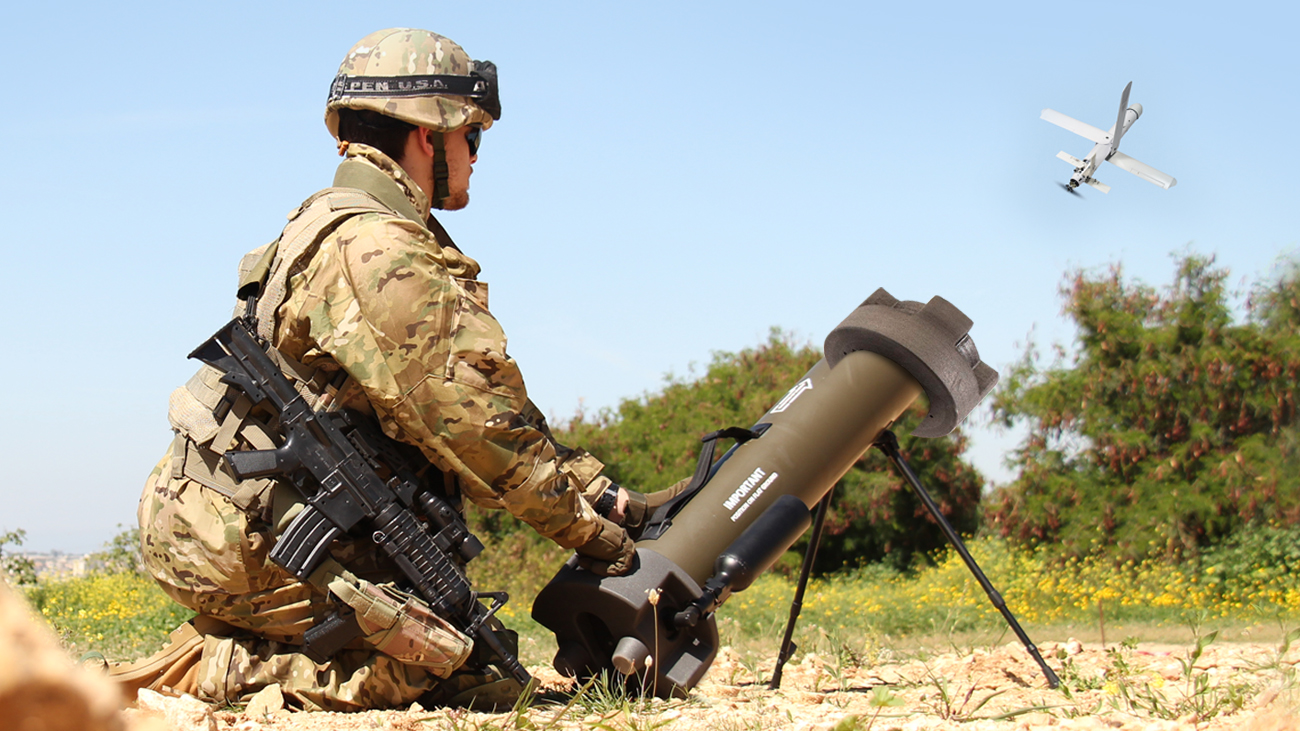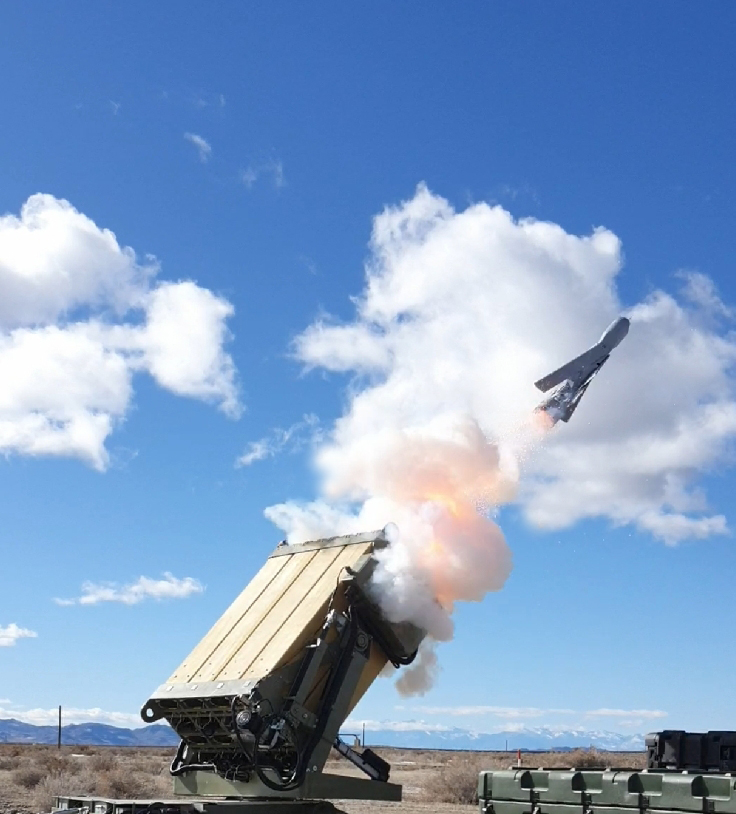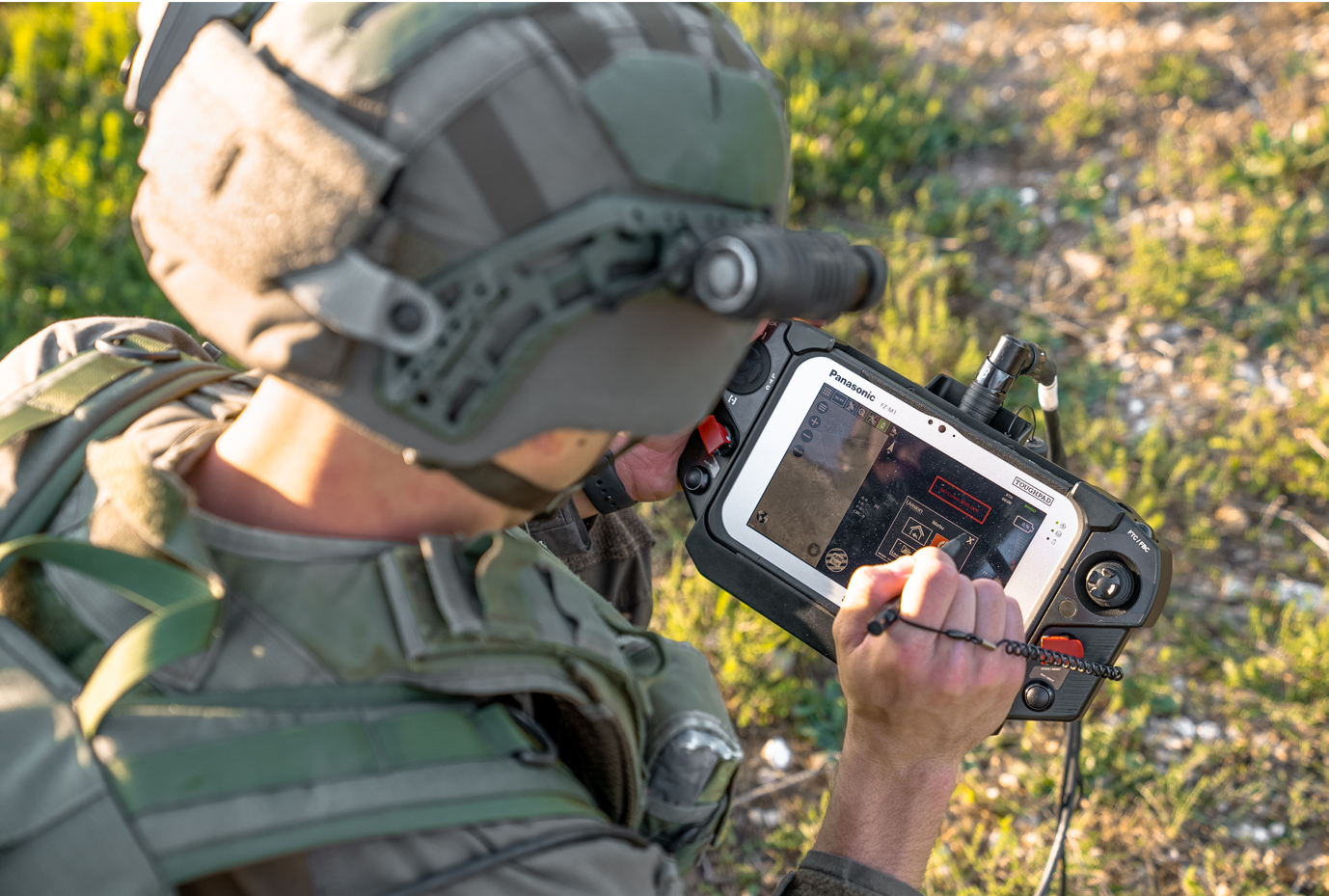- Reaction score
- 8,295
- Points
- 1,160
I'm starting this thread because I am finding it difficult to keep discussions within the narrow confines of the threads on this board. I have become a serial violator of silos as I invariably find that everything is connected to everything else. In my cluttered mind this is becoming more apparent as weapons become more capable, at lower prices and become less platform dependent. The weapons become more capable, more precise, have longer ranges and are less dependent on launch platforms.
Moore's Law is catching up to us. The cost of smart weapons is dropping. The quality of weapons being provided at scale and at cost by a host of technically competent countries is increasing - countries that have a lot more security incentives to keep trying to do things differently.
The movement is spreading.
 www.nationaldefensemagazine.org
www.nationaldefensemagazine.org
Often other forces are buying 80% solutions at 20% of the cost. Nobody will confuse a Bayraktar for a Reaper, or a Stugna for a Javelin, but the lower cost solutions improve capabilities and make their owners that much harder to defeat.
An example might be the 155mm Excalibur round. At a cost of about 125,000 USD it has a range of 25 to 40 km (expanding to 70 km in the foreseeable future) with a wiki CEP of 4m. An alternate choice for the gunners is the M1156 Precision Guided Munitions Kit, a fuzing assembly that also steers the round off its ballistic course. The kit reduces the CEP of the dumb round from 250m to 50m. This is not the 5m of the Excalibur but it heads in the right direction - and at a cost of < 10,000 USD. And the Excalibur had its origins in 1992, 30 years ago. The M1156 development started circa 2006, 16 years ago. There are 7 of Moore's generations between the Excalibur and the M1156. There have been 8 generations since.
Although some nations focus on safety and security and ensuring the integrity of the supply chain other nations, with different incentives, are more inclined to exploit the opportunities inherent in Moore's observation and let innovation drive their strategy and demand a more flexible supply chain. Korea, Poland, Turkey and Israel immediately come to mind. And Ukraine for that matter.
Is there any reason to think that an M1156 type kit cannot achieve Excalibur type results in the short term?
The other reason for starting this thread is the tendency to platform independence and the increasing tendency to remote autonomy that accompanies the move to uninhabited systems.
The armies of the world have spent a century searching for the ultimate All Terrain Vehicle. I suggest that the ultimate ATV is an aircraft. I further suggest that an aircraft is any man-made thing that flies, whether ballistic or self-powered; dumb, guided or autonomous; inhabited or uninhabited; rotary wing or fixed wing; IC, Jet, Rocket, Ramjet or Electrically powered.
The fact that the sailors, soldiers and aviators of Navies, Armies and Air Forces are now all launching variants of the same aircraft from watercraft, landcraft and aircraft is, I believe, part of the underlying tension amongst the services. They are competing to survive in an environment where their traditional domains are melding into the multi-domain universe. And they are doing this at a time where the pool of potential candidates for their services is both shrinking and morphing. All nations of the OECD are struggling with the impact of the 1972 Club of Rome report, which counselled reducing the size of families, and the related impacts of the birth control pill and access to abortions. There are simply fewer young people available.
Those that are are not the physically strong farm boys, steel workers and miners of the past. They are physically challenged information workers, project managers, students and gamers.
The good news is that these people are well suited to exploit Moore's Law.
The bad news is that the aircraft they might interact with can be launched from fixed positions on land and at sea, from landcraft, seacraft - both on the surface and under the surface, and from aircraft. And the operator may never leave her cat adorned cubicle with its Keurig and it Link16 connection.
From Rimpac -
Nomad and Ranger are unmanned versions of the Anticostis operated by the RCN in the 1990s
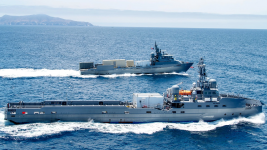

HMCS Anticosti.
 www.nationaldefensemagazine.org
www.nationaldefensemagazine.org
These vessels, with their container carrying capacity, can be launch pads for the SM6 and other missiles.
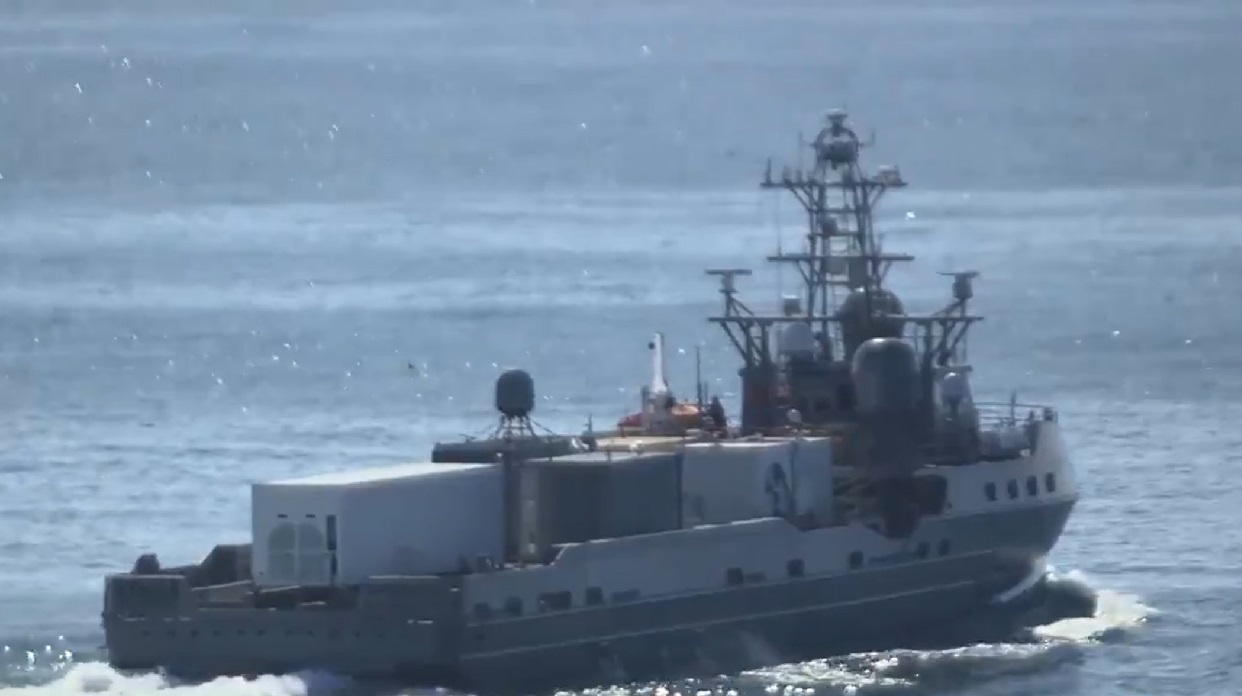
 navalpost.com
navalpost.com
Sea Hawk and Sea Hunter, with ISR suites, including Towed Arrays, are contributing to the AAW and ASW pictures.
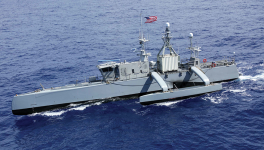
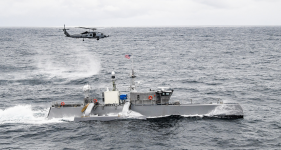
These seacraft, with their ability to relocate and hold position autonomously are drawing on the experiences of these 1970s projects: the SWATH T-AGOS and Bras D'or. Both of which relied on towed arrays and minimal manning.
And are headed towards
On the Command and Control front, from the Rimpac article
Command and Control was transferred from the "local" commander at sea to the "remote" commander on shore. Could more emphasis, more reliance, be placed on the "remote" structure? At what risk?
From the same article,
So ASW prosecuted by Sea Hunters and Reapers from cubicles.
And when you leave people out of the equation - you don't need decks, space in the engine room for maintenance, or even to worry about not being awash. You can sail at snorkel depth.
I'm tying this to some postings I consider related
With all of these synergies, with all of this consolidation, is the right starting point for the discussion on Force 2025/2030 an infantry-centric medium force?
Moore's Law is catching up to us. The cost of smart weapons is dropping. The quality of weapons being provided at scale and at cost by a host of technically competent countries is increasing - countries that have a lot more security incentives to keep trying to do things differently.
The movement is spreading.
Col. Arnaud Goujon, chief of plans at the French army headquarters, said the service is looking to add loitering munitions to its inventory later in the year.
“You need something that is different than a mortar or an artillery shell,” Goujon said. “If it is the same price of a mortar round that goes about three kilometers away and flies for 15 minutes, then it’s interesting,” he said. If it costs 10 times as much as a mortar or an artillery round with the same range, then it’s less interesting, he added.
If it can fly 30 or 50 kilometers away and endure for two to four hours, “then it’s a different animal,” he said.
Goujon indicated that the French army would start off by acquiring the smaller Switchblade.
Loitering Munitions Proliferate As Tech Changes Battlefield
Loitering Munitions Proliferate As Tech Changes Battlefield
Often other forces are buying 80% solutions at 20% of the cost. Nobody will confuse a Bayraktar for a Reaper, or a Stugna for a Javelin, but the lower cost solutions improve capabilities and make their owners that much harder to defeat.
An example might be the 155mm Excalibur round. At a cost of about 125,000 USD it has a range of 25 to 40 km (expanding to 70 km in the foreseeable future) with a wiki CEP of 4m. An alternate choice for the gunners is the M1156 Precision Guided Munitions Kit, a fuzing assembly that also steers the round off its ballistic course. The kit reduces the CEP of the dumb round from 250m to 50m. This is not the 5m of the Excalibur but it heads in the right direction - and at a cost of < 10,000 USD. And the Excalibur had its origins in 1992, 30 years ago. The M1156 development started circa 2006, 16 years ago. There are 7 of Moore's generations between the Excalibur and the M1156. There have been 8 generations since.
Although some nations focus on safety and security and ensuring the integrity of the supply chain other nations, with different incentives, are more inclined to exploit the opportunities inherent in Moore's observation and let innovation drive their strategy and demand a more flexible supply chain. Korea, Poland, Turkey and Israel immediately come to mind. And Ukraine for that matter.
Is there any reason to think that an M1156 type kit cannot achieve Excalibur type results in the short term?
The other reason for starting this thread is the tendency to platform independence and the increasing tendency to remote autonomy that accompanies the move to uninhabited systems.
The armies of the world have spent a century searching for the ultimate All Terrain Vehicle. I suggest that the ultimate ATV is an aircraft. I further suggest that an aircraft is any man-made thing that flies, whether ballistic or self-powered; dumb, guided or autonomous; inhabited or uninhabited; rotary wing or fixed wing; IC, Jet, Rocket, Ramjet or Electrically powered.
The fact that the sailors, soldiers and aviators of Navies, Armies and Air Forces are now all launching variants of the same aircraft from watercraft, landcraft and aircraft is, I believe, part of the underlying tension amongst the services. They are competing to survive in an environment where their traditional domains are melding into the multi-domain universe. And they are doing this at a time where the pool of potential candidates for their services is both shrinking and morphing. All nations of the OECD are struggling with the impact of the 1972 Club of Rome report, which counselled reducing the size of families, and the related impacts of the birth control pill and access to abortions. There are simply fewer young people available.
Those that are are not the physically strong farm boys, steel workers and miners of the past. They are physically challenged information workers, project managers, students and gamers.
The good news is that these people are well suited to exploit Moore's Law.
The bad news is that the aircraft they might interact with can be launched from fixed positions on land and at sea, from landcraft, seacraft - both on the surface and under the surface, and from aircraft. And the operator may never leave her cat adorned cubicle with its Keurig and it Link16 connection.
From Rimpac -
The four unmanned surface vehicles that the Navy brought to the exercise carried specialized payloads for anti-submarine warfare, intelligence, surveillance and reconnaissance, domain awareness and communications capability, he said. “So that’s all kind of new.”
Two of the USVs were designed and built as unmanned vessels: the Sea Hunter — originally developed by the Defense Advanced Research and Projects Agency — and the Sea Hawk — developed through the Office of Naval Research. The other two — Nomad and Ranger — were previously manned vessels that have been retrofitted with autonomous technology through the Ghost Fleet Overlord program.
Sea Hunter and Sea Hawk steamed from San Diego to Hawaii autonomously, Brown said. “This is the first time they’re participating in an exercise to this magnitude, or really [the] first time they’ve done an extended exercise or been away from port.”
All four conducted numerous operations during the exercise under the watch of Cmdr. Jeremiah Daley, head of the Navy’s recently established Unmanned Surface Vessel Division One.
Nomad and Ranger are unmanned versions of the Anticostis operated by the RCN in the 1990s


HMCS Anticosti.
Unmanned Systems Make a Splash During RIMPAC
Unmanned Systems Make a Splash During RIMPAC
These vessels, with their container carrying capacity, can be launch pads for the SM6 and other missiles.

U.S. Navy deploys SM-6 missile on USV Ranger for tests - Naval Post- Naval News and Information
According to a video released by the U.S. Department of Defense, the U.S. Navy deployed four-pack of containerized SM-6 launchers on an unmanned surface vessel "Ranger" for tests.
Sea Hawk and Sea Hunter, with ISR suites, including Towed Arrays, are contributing to the AAW and ASW pictures.


These seacraft, with their ability to relocate and hold position autonomously are drawing on the experiences of these 1970s projects: the SWATH T-AGOS and Bras D'or. Both of which relied on towed arrays and minimal manning.
And are headed towards
On the Command and Control front, from the Rimpac article
... the partner commanders did not have direct access to the unmanned platforms and their classified operating technology but rather gave mission orders to U.S. service members controlling the platforms. However, the international participants had access to all the sensor data just as they would from any shared platform, according to Daley.
Command and control worked as expected during the exercise, but there was an incident with one of the manned ships that required transferring USV control from afloat to ashore, he said.
“That was a tremendous effort on the part of the command structure,” he said. “We were postured to do it, and it was good from a data-collection standpoint, which helps further develop the concept of operations and the concept of employment for real-world operations.”
Command and Control was transferred from the "local" commander at sea to the "remote" commander on shore. Could more emphasis, more reliance, be placed on the "remote" structure? At what risk?
From the same article,
And it wasn’t just the USVs that caught people’s attention during the exercise. The MQ-9B, the next generation of the MQ-9A Reaper, was also getting a workout during the exercise.
“It seems like a pretty capable platform for the [Defense Department] as a whole,” Brown said. “The endurance it has, the payloads it can carry, it can do [anti-submarine warfare], it has radars onboard that can collect signals, and the fact that it can be flown from anywhere is pretty amazing. So, I think that this bravo model is an advancement.”
The MQ-9B factored into a range of exercises, he added, including providing video feeds of the two “sink exercises” where participants fired on and sank decommissioned ships.
Operators controlled the MQ-9B from ground control and mission intelligence stations at Pearl Harbor Naval Base, and the platform took off and landed autonomously from the Marine Corps Base in Kaneohe Bay, about 15 miles northeast of Pearl Harbor.
So ASW prosecuted by Sea Hunters and Reapers from cubicles.
And when you leave people out of the equation - you don't need decks, space in the engine room for maintenance, or even to worry about not being awash. You can sail at snorkel depth.
I'm tying this to some postings I consider related
In a dollars and cents discussion would buying and operating the MQ-9A in that role be more or lest costly than "drone-carriers"?
Looking at the Loyal Wingman type programmes now
View attachment 72620
View attachment 72621
View attachment 72622
View attachment 72623
I'm seeing much of a sameness about them.
Except that the Kratos products seem to be considerably lower cost.

Kratos Reveals Existence Of Secretive Demogorgon Unmanned Combat Aircraft Program (Updated)
The company has a rapidly growing portfolio of combat drones, over half of which remain classified, as the Air Force signals an appetite for more.www.thedrive.com
View attachment 72624
View attachment 72634
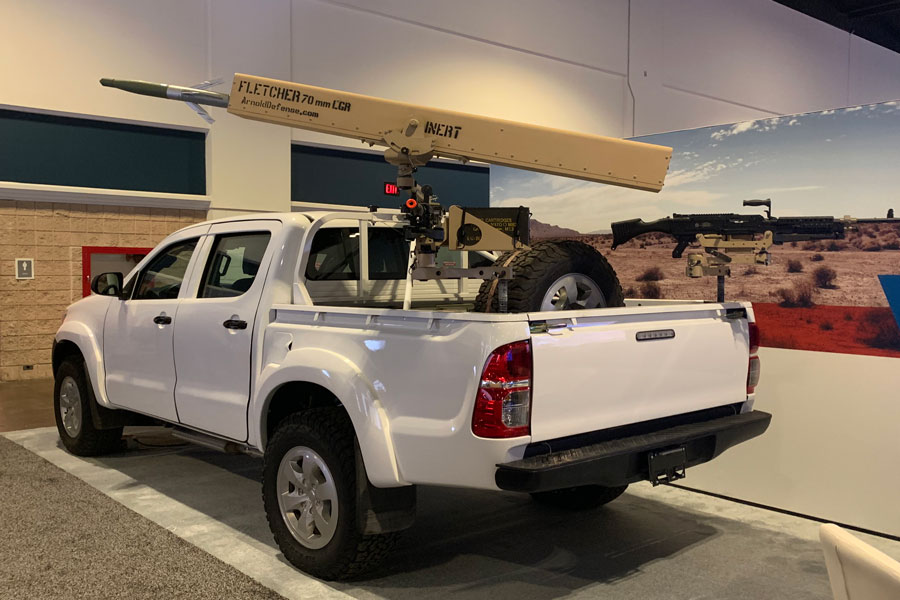
Arnold Defense displays vehicle-mounted rocket launcher at SOFIC
Arnold Defense is experimenting with integrating its FLETCHER laser-guided rocket system on a UGV.www.defenceprocurementinternational.com
Thinking more about the Lt Cavalry role for the Reserves.
Jankel Toyotas for the patrol troops.
And Jankel Toyotas with the Arnold Defense/Fletcher 23 round 70mm rocket launchers? Both direct (precision) and indirect (suppression) fires from one platform. And possibly a bit of AD (the 70mm was originally an anti-aircraft missile and Stinger is a 70 mm missile as well)
Progress - 155mm Ramjet projectiles tested in Norway in April of this year.

The range revolution - Nammo
www.nammo.com
Nammo and Boeing are also partnered with Saab on the Ground Launched Small Diameter Bomb based on the M31 rocket.
Ramjets are a key to the Hypersonic world. And NAMMO has a head start.
Next step - Mount a Ramjet munition in place of the SDB on top of the M31. And containerize.
With all of these synergies, with all of this consolidation, is the right starting point for the discussion on Force 2025/2030 an infantry-centric medium force?





